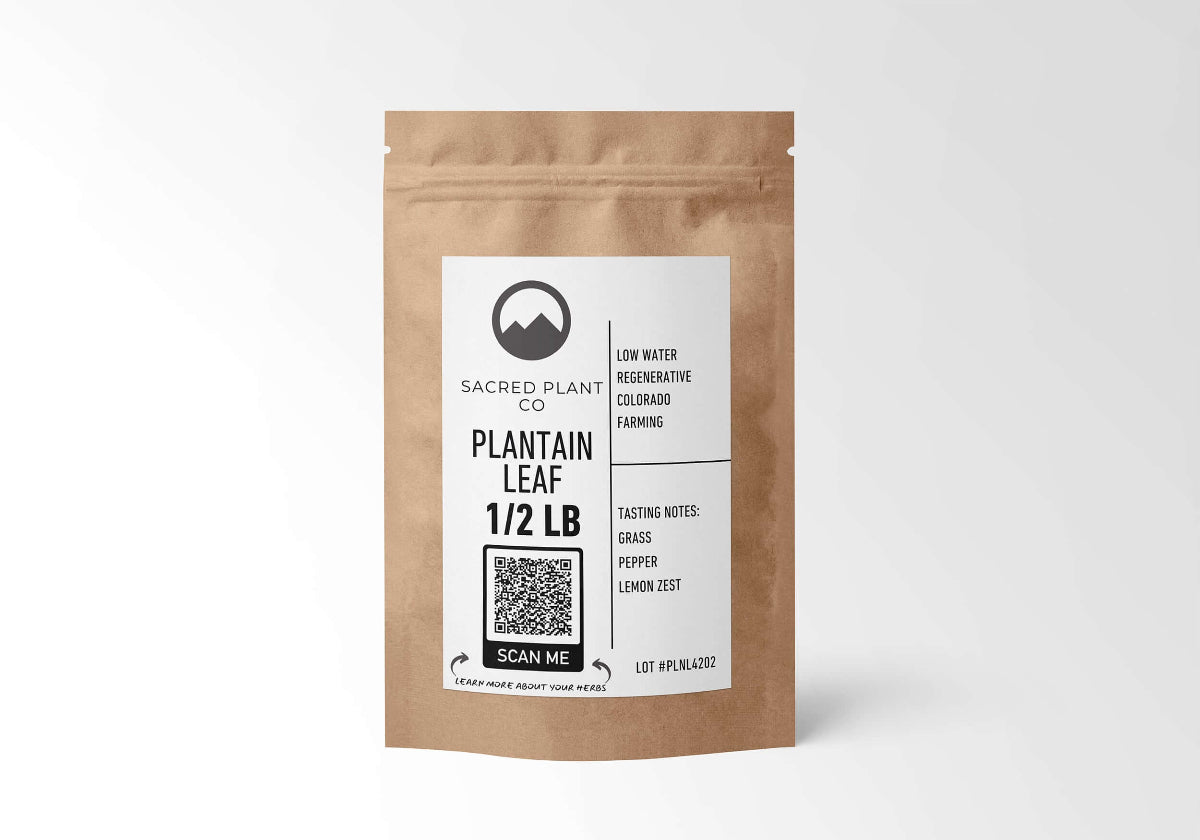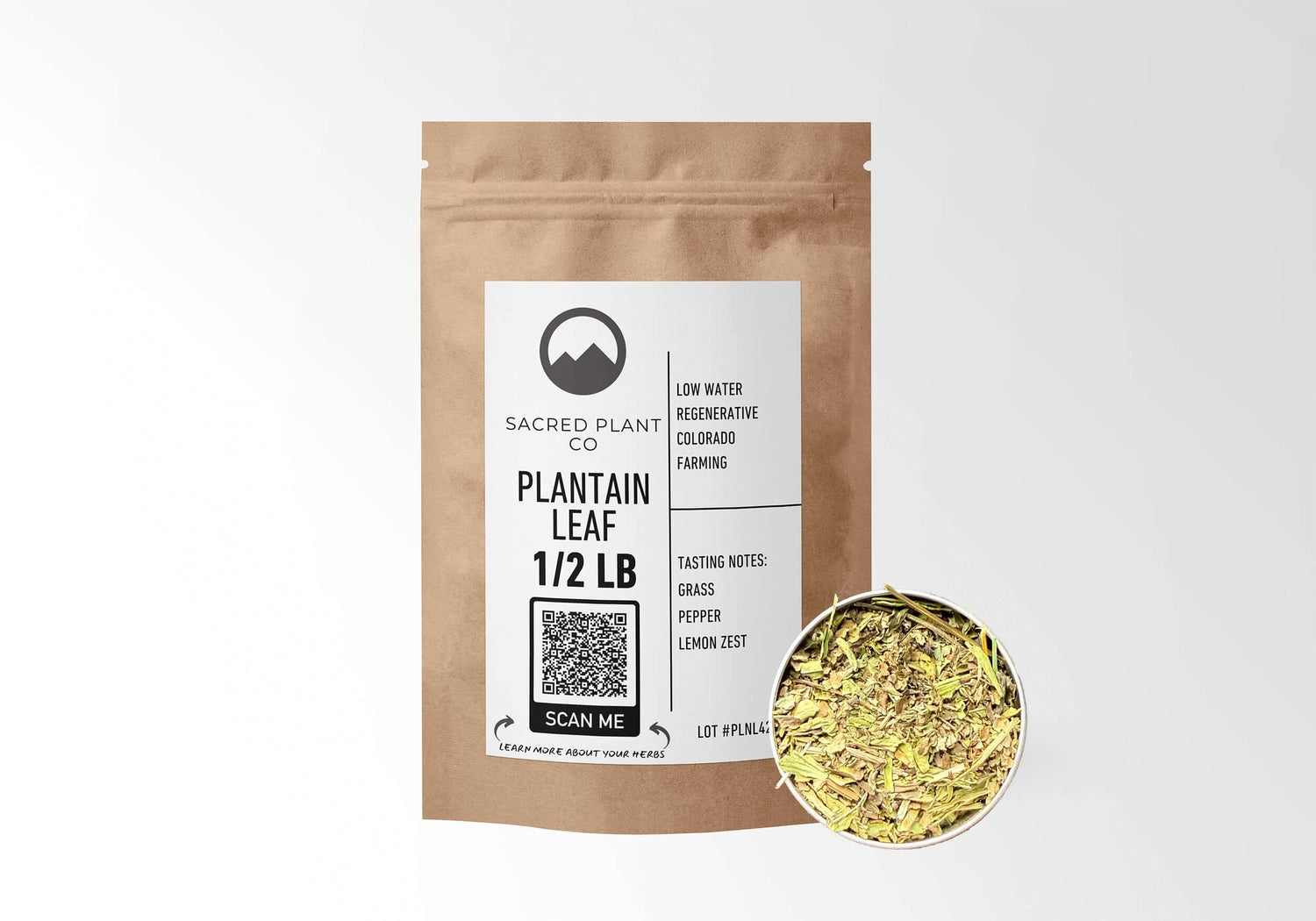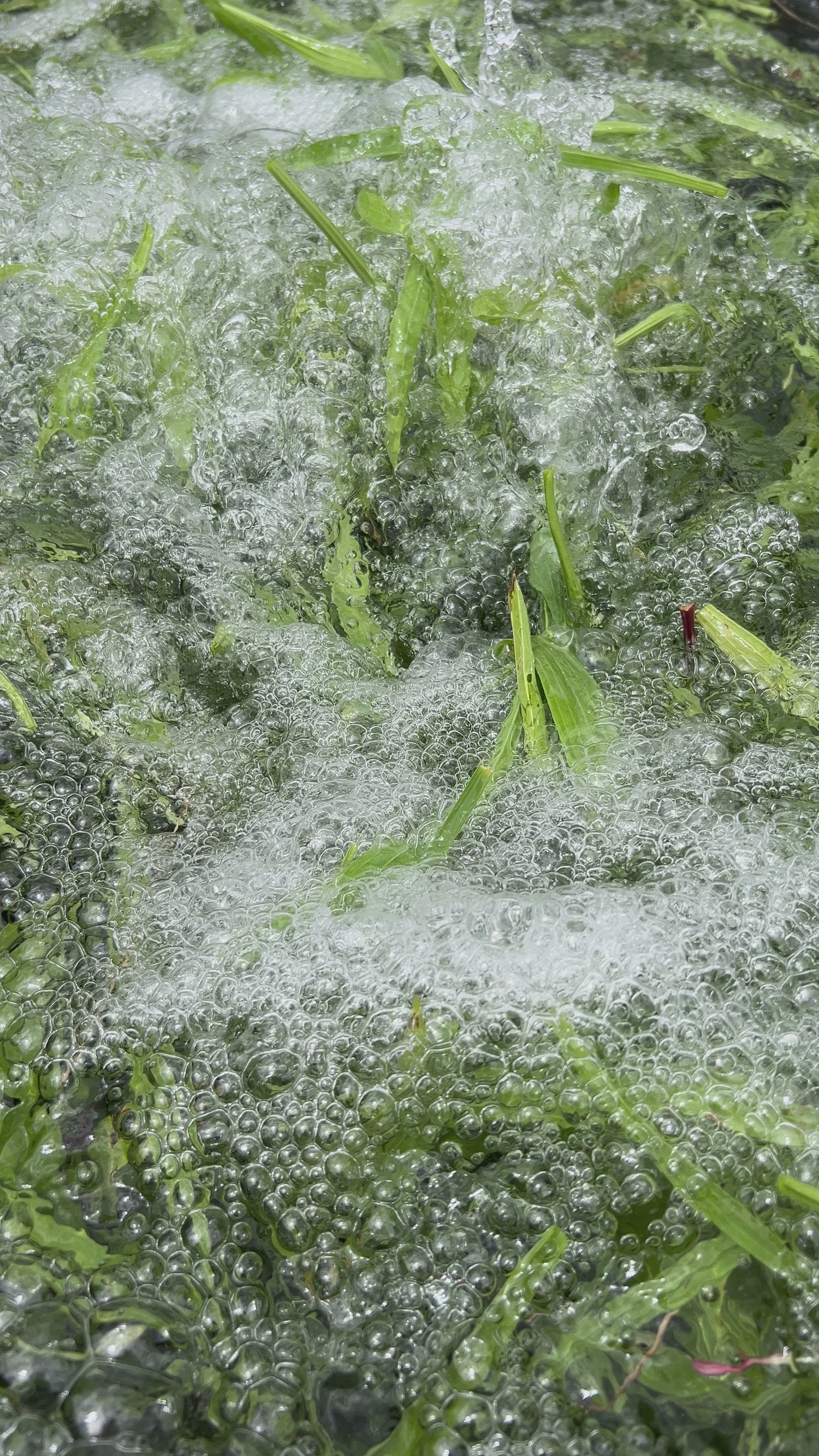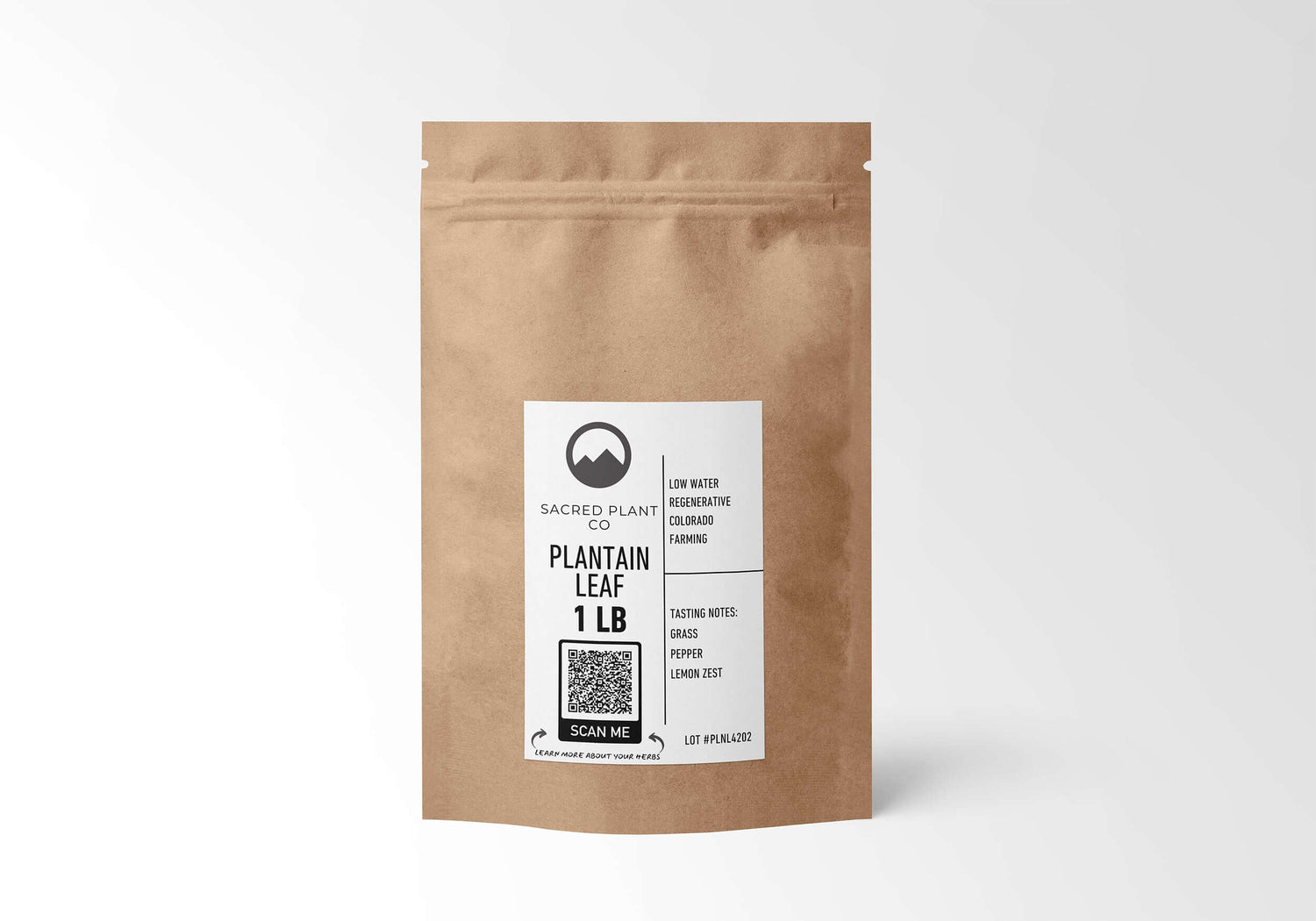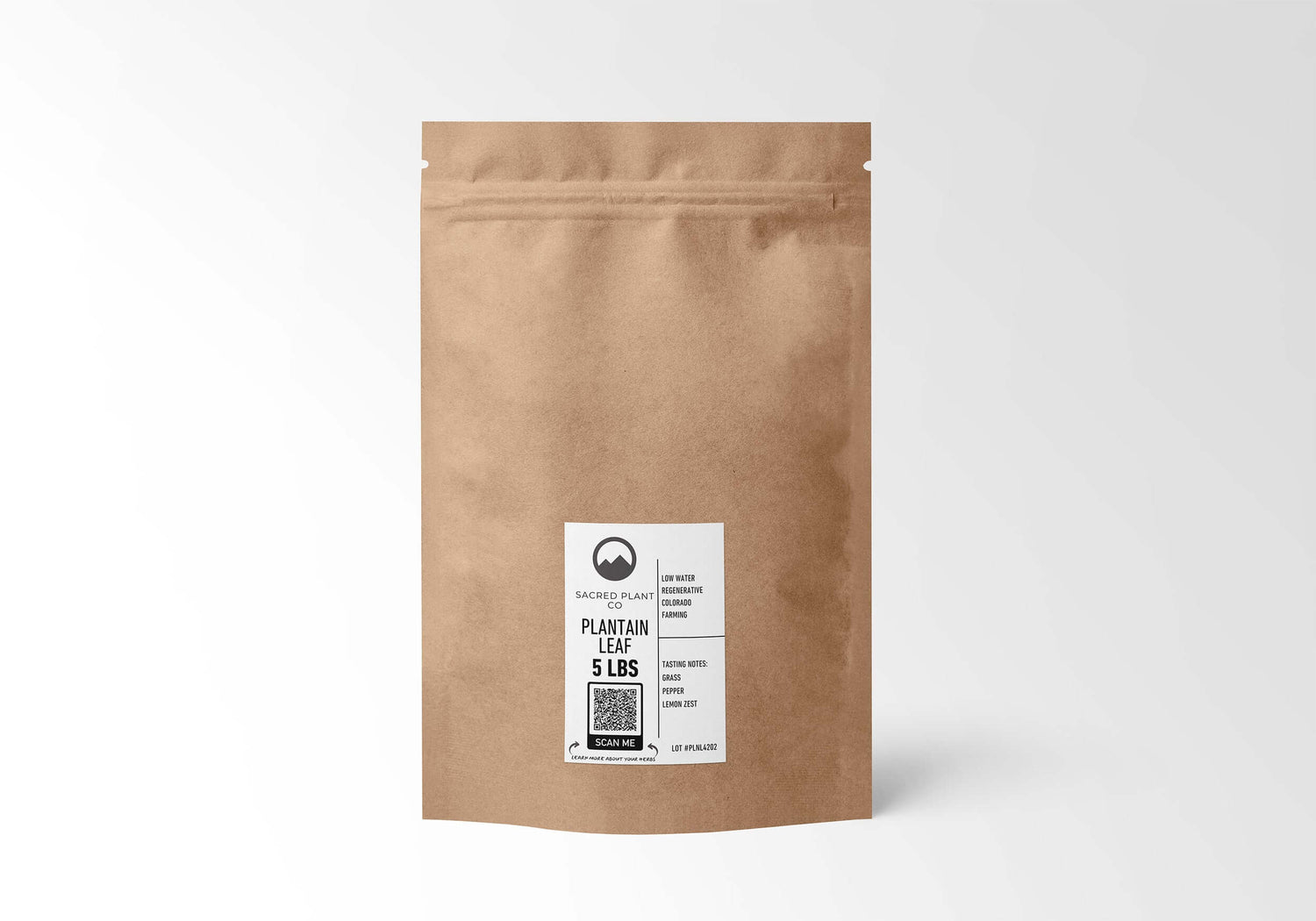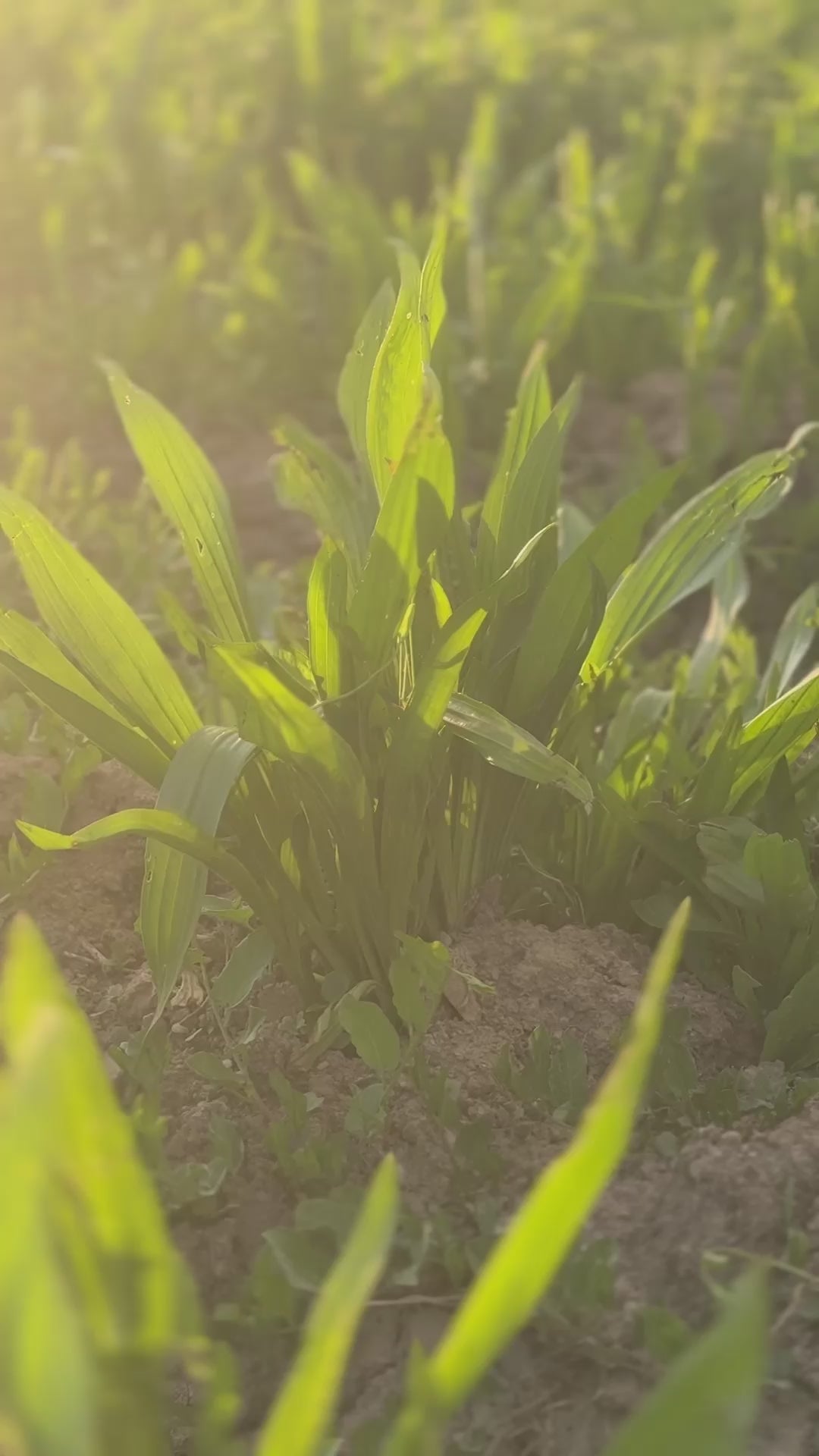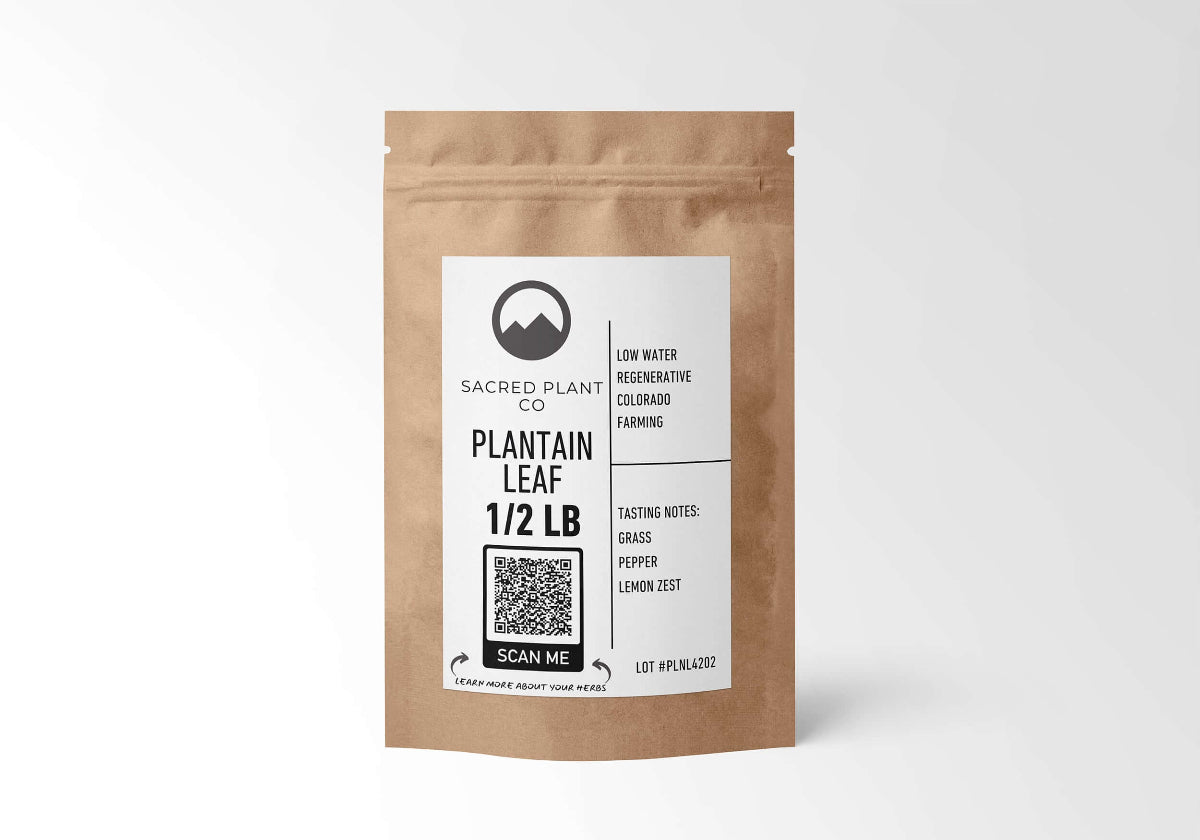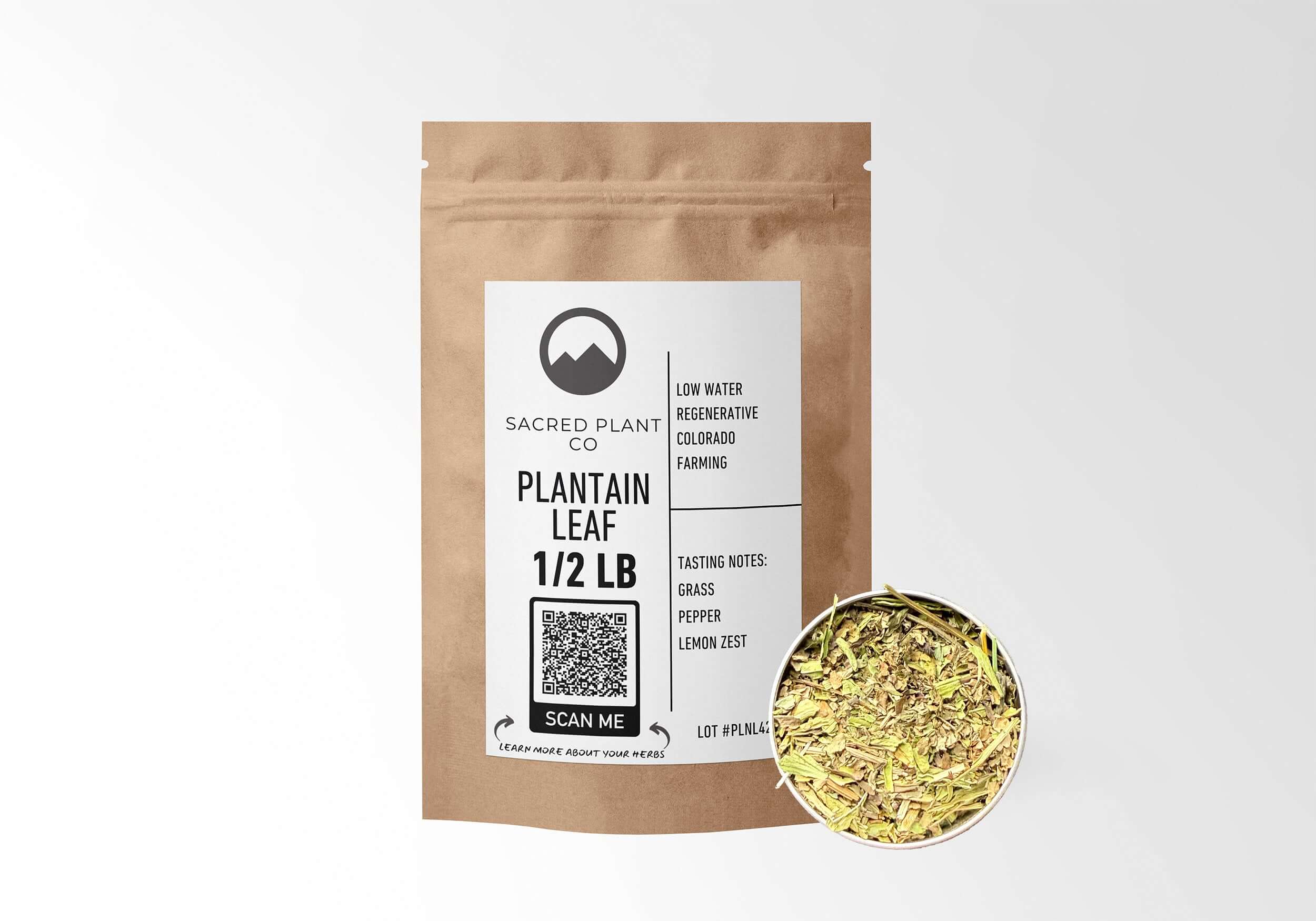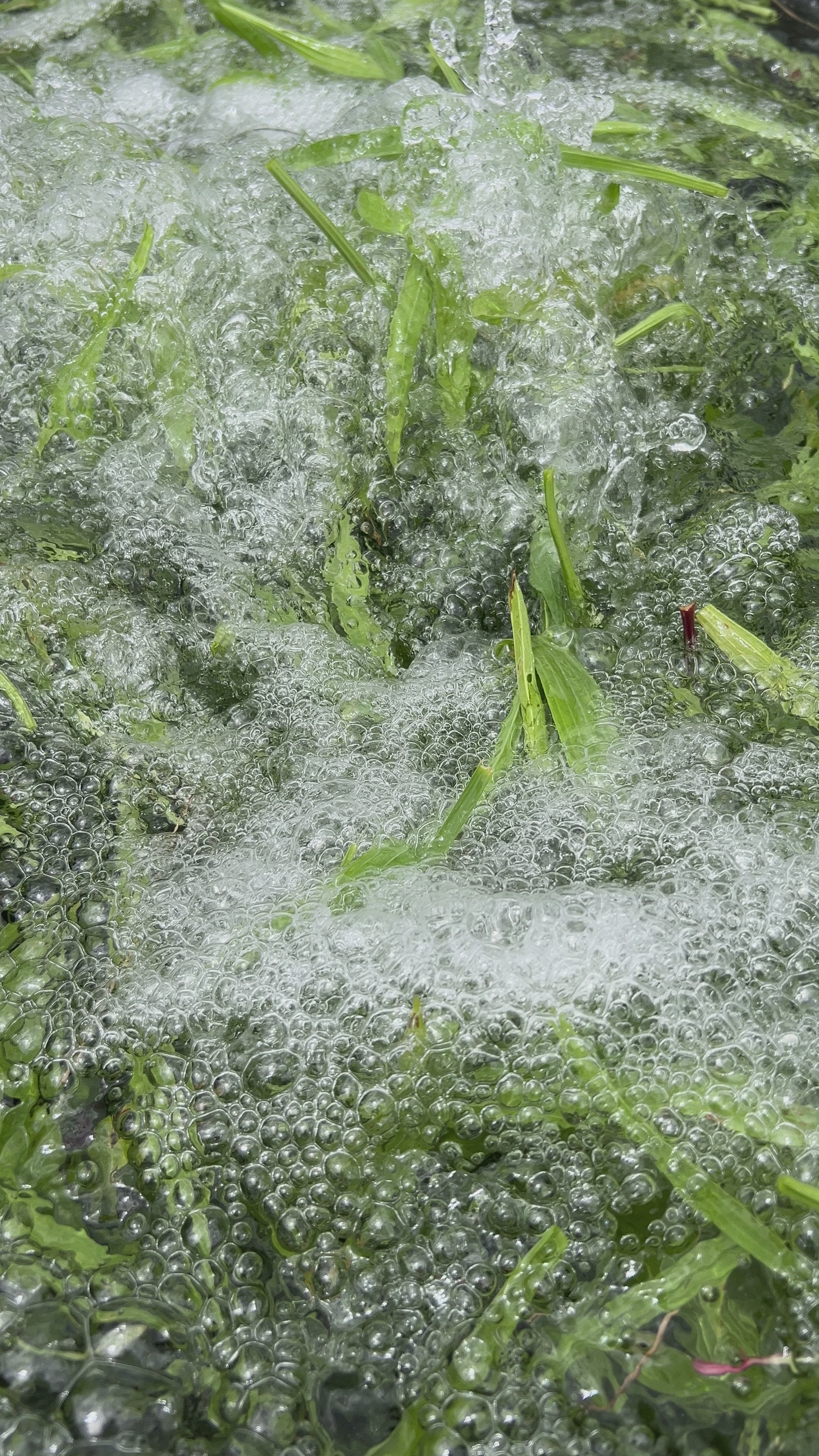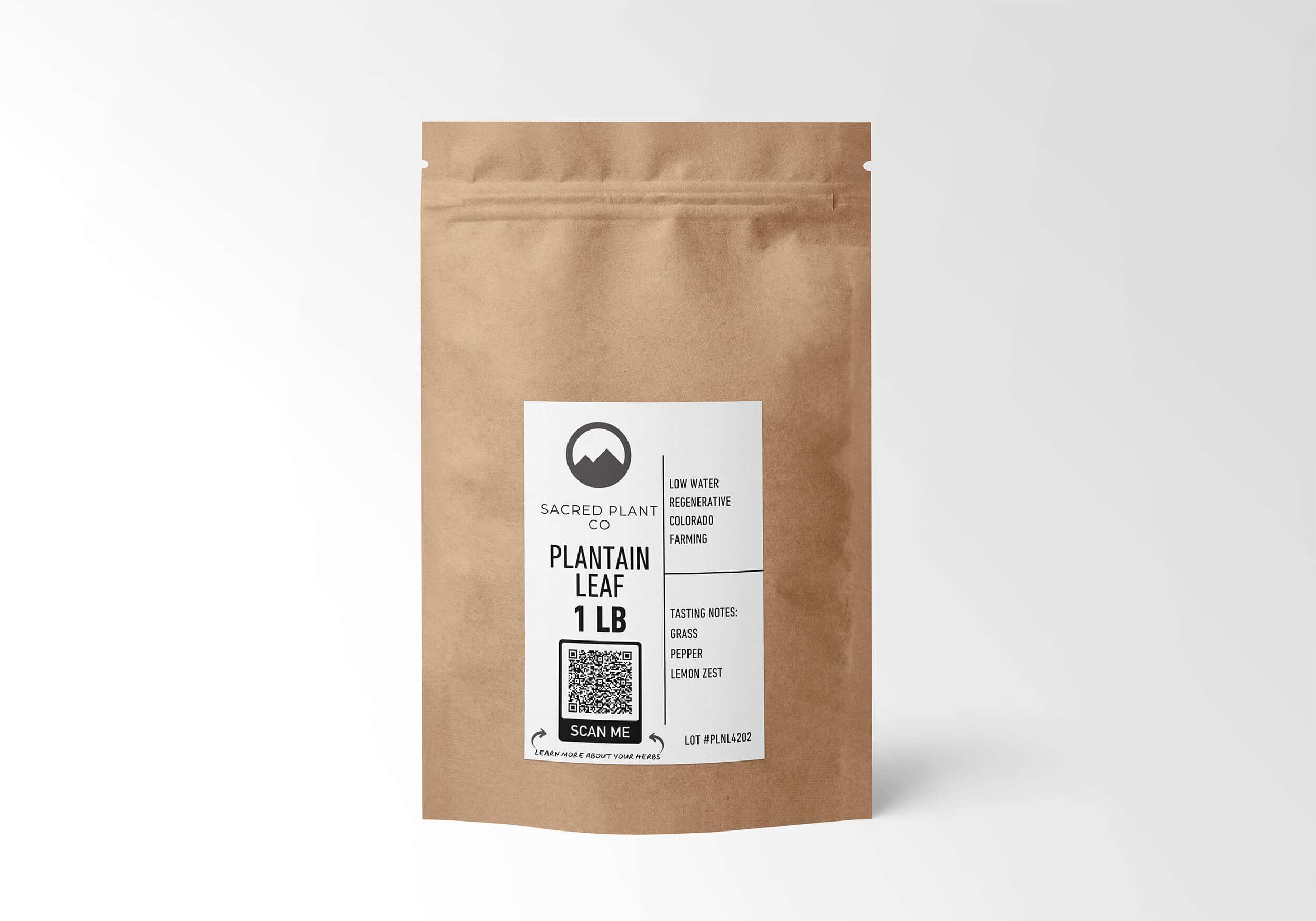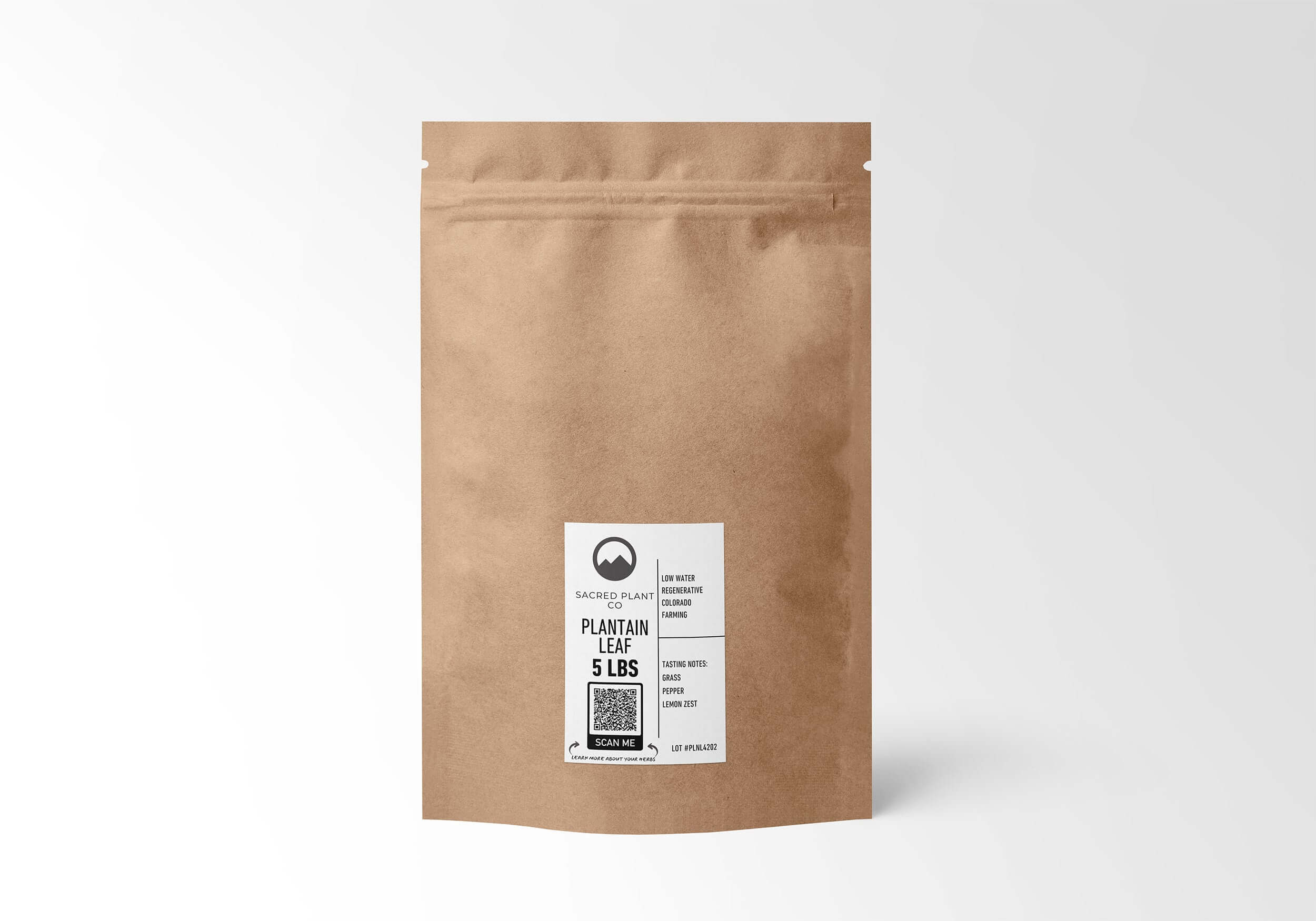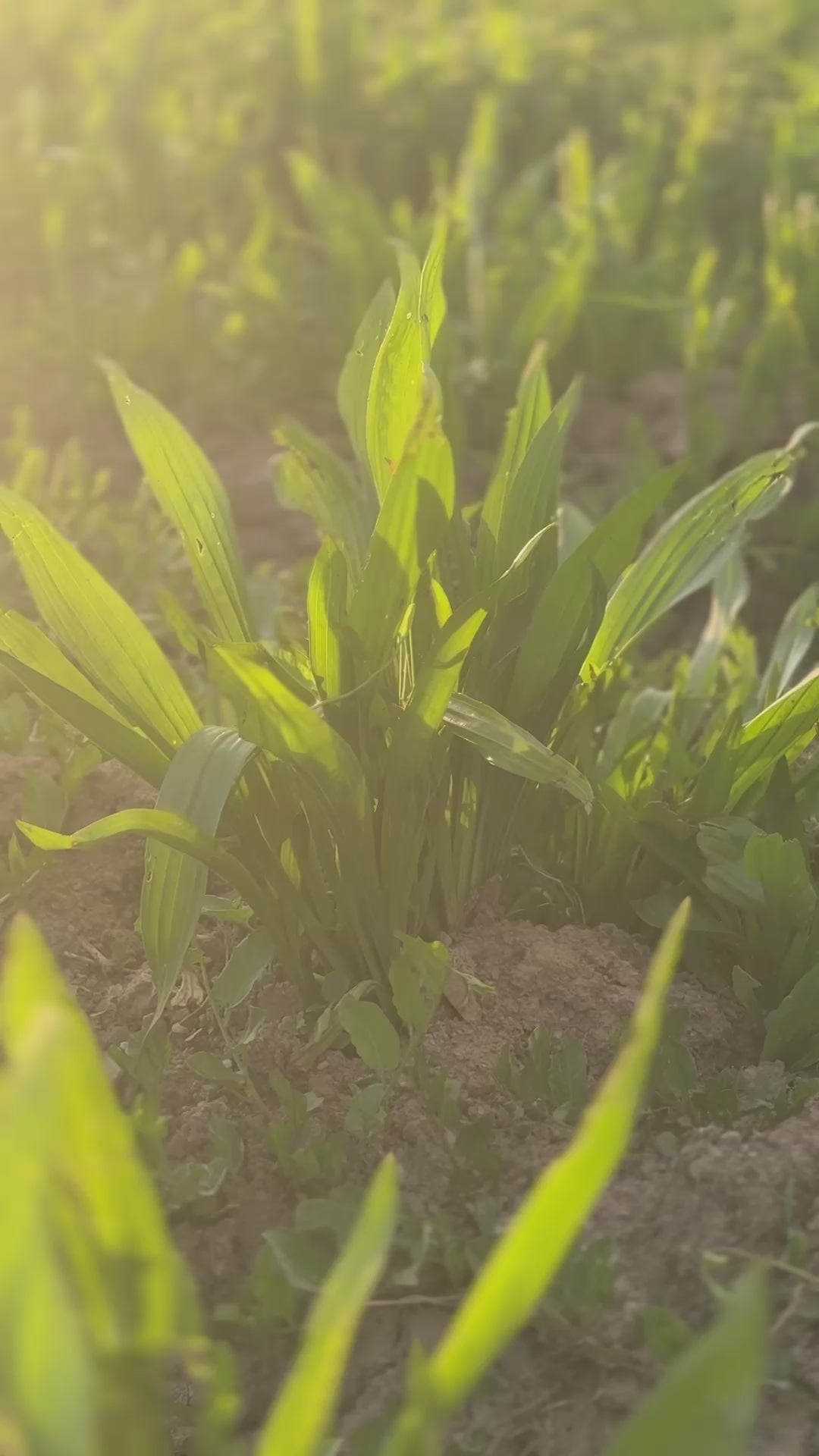1. What is broadleaf plantain used for in herbal medicine?
Broadleaf plantain (Plantago major) is a widely respected herb in both traditional and modern herbal medicine. It’s used to soothe inflammation, support digestive health, calm skin irritation, and aid wound healing. Its high mucilage content makes it a favorite for teas, salves, and poultices aimed at drawing out toxins and promoting recovery
2. Can I drink plantain leaf as a tea, and how do I prepare it?Yes! Plantain leaf makes a soothing herbal tea often used to support digestion, reduce inflammation, and gently detoxify the body. To prepare: steep 1–2 teaspoons of cut and sifted plantain leaf in hot water for 10–15 minutes. Strain and enjoy warm. For a stronger infusion, let it steep covered for up to 30 minutes.
3. How does Sacred Plant Co grow and process its plantain leaf?We grow our broadleaf plantain regeneratively on a mountain farm in Colorado. Each leaf is hand-harvested at peak potency, then gently air-dried in small batches to preserve its active compounds. Our cut and sifted format ensures easy use in teas, tinctures, and salves, without compromising quality or purity.
4. Is this plantain leaf safe for skin care and salves?Absolutely. Broadleaf plantain has long been used topically to help soothe insect bites, rashes, burns, and wounds. Its cooling and anti-inflammatory properties make it ideal for homemade salves, poultices, or infused oils. Just be sure to test for sensitivity if using it on damaged skin or with other herbs.
5. What’s the difference between narrowleaf and broadleaf plantain?Broadleaf plantain (Plantago major) has wide, oval leaves and is most commonly used for skin issues and external applications. Narrowleaf plantain (Plantago lanceolata) has longer, thinner leaves and is often favored for respiratory and internal formulas. Both are powerful herbs, but broadleaf tends to be more mucilaginous, making it better for soothing and drawing applications on the skin.


